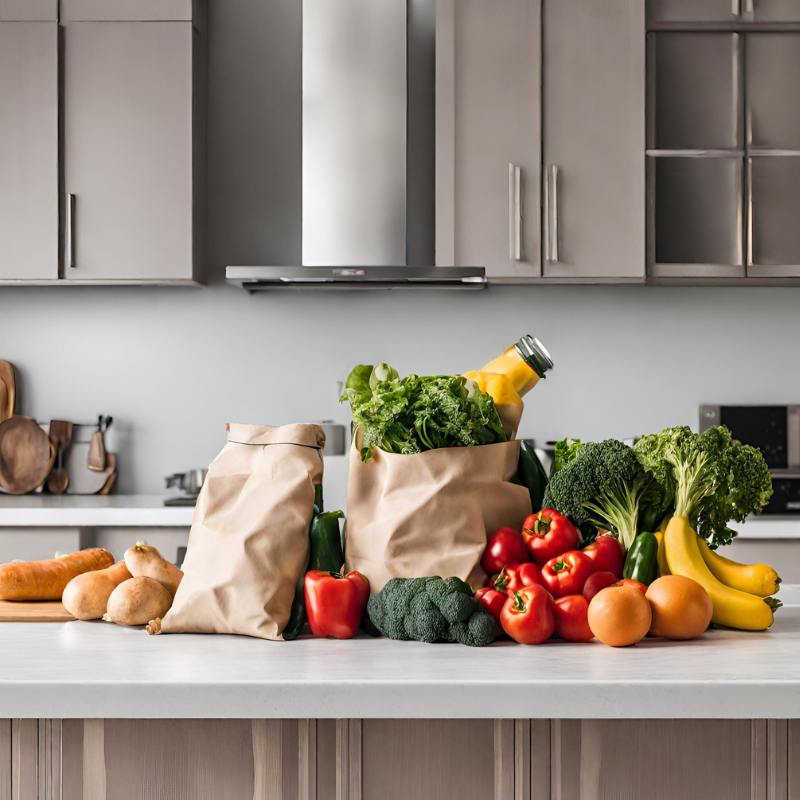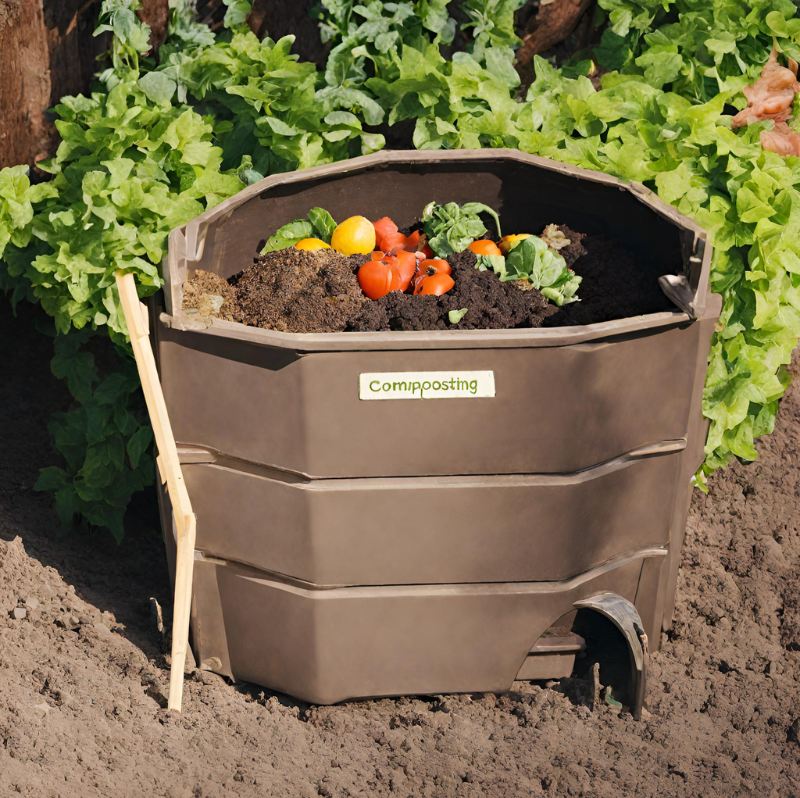6 Reasons Why More and More People are Cooking at Home
Posted by M. Davis on Feb 9th 2024
- It’s true, more people are cooking and eating their meals at home these days. Reportedly 80% were eating at home in 2021 which was down a bit from the 88% high in 2020, but the cooking and eating at home trend is still going on in 2024. Perhaps working remotely has something to do with it as well as more adult children living with their parents which may mean housing affordability may be part of it.
- Health concerns: With growing awareness about the importance of healthy eating, more people are choosing to cook at home to have better control over the ingredients they consume and to avoid processed foods.
- Economic factors: Economic uncertainties or downturns may prompt individuals and families to cut down on dining out expenses and opt for more economical home-cooked meals.
- Convenience of meal delivery services: The rise of meal delivery services that provide pre-portioned ingredients and recipes directly to consumers' doorsteps has made home cooking more accessible and convenient for those with busy lifestyles.
- Emphasis on sustainability: Many people are becoming more conscious of the environmental impact of food production and transportation. Cooking at home allows individuals to reduce their carbon footprint by sourcing local ingredients and minimizing food waste.
- Social trends: Cooking and sharing meals at home can be seen as a way to foster connections with family and friends, especially in the wake of the COVID-19 pandemic, where people have spent more time indoors and prioritized home-based activities.
- Culinary trends and DIY culture: Cooking has become increasingly popular as a hobby, with many individuals exploring new recipes, techniques, and cuisines through online tutorials, cooking shows, and social media platforms. This DIY culture encourages more people to experiment with cooking at home.
- Health concerns play a significant role in driving the trend of more people cooking at home in 2024. Here are some specific aspects of health concerns that contribute to this trend:
- Nutritional control: Cooking at home allows individuals to have better control over the ingredients they use in their meals. This control extends to portion sizes, quality of ingredients, and the balance of nutrients in the dishes they prepare. By cooking at home, people can make healthier choices, such as reducing the amount of salt, sugar, and unhealthy fats in their meals, and increasing the consumption of fruits, vegetables, whole grains, and lean proteins.
- Reduced consumption of processed foods: Many processed and pre-packaged foods contain high levels of preservatives, additives, and artificial ingredients, which may have negative effects on health when consumed regularly. By cooking meals from scratch at home, people can minimize their intake of processed foods and opt for fresher, more wholesome ingredients.
- Food allergies and intolerances: Cooking at home allows individuals with food allergies or intolerances to have better control over their diets and avoid potential allergens or trigger ingredients. It enables them to carefully select ingredients and prepare meals in a safe and allergen-free environment, reducing the risk of adverse reactions.
- Weight management: Home-cooked meals tend to be lower in calories and healthier than restaurant or fast food options. By cooking at home, individuals can better manage their caloric intake, portion sizes, and overall dietary habits, which can contribute to weight loss or weight maintenance goals.
- Customization and dietary restrictions: Cooking at home accommodates various dietary preferences and restrictions, such as vegetarianism, veganism, gluten-free, or dairy-free diets. People can tailor recipes to suit their individual dietary needs and preferences, ensuring that they consume a balanced and nutritious diet that supports their health and well-being.

- Economic factors are significant drivers of the trend toward more people cooking at home in 2024. Several key aspects contribute to this:
- Cost savings: Eating out, whether at restaurants or ordering takeout, can be significantly more expensive than cooking meals at home. With economic uncertainties or downturns, individuals and families may find it necessary to tighten their budgets and cut down on discretionary spending, including dining out expenses. Cooking at home allows people to save money by purchasing groceries in bulk, taking advantage of sales and discounts, and preparing meals that are often more affordable than restaurant options.
- Reduced food waste: Cooking at home enables individuals to make more efficient use of ingredients and reduce food waste. By planning meals, utilizing leftovers, and creatively repurposing ingredients, people can stretch their food budgets further and minimize the amount of food that goes unused and ultimately wasted. This frugal approach to cooking aligns with economic concerns and encourages more people to embrace home cooking as a cost-effective way to feed themselves and their families.
- Investment in kitchen equipment and skills: While there may be upfront costs associated with stocking a kitchen with essential cooking tools and ingredients, these investments can lead to long-term savings and benefits. Learning basic cooking skills and techniques empowers individuals to prepare meals from scratch using affordable ingredients, rather than relying on costly convenience foods or dining out options. Over time, the ability to cook at home can result in significant savings on food expenses and contribute to overall financial stability.
- Value of home-cooked meals: Beyond the immediate cost savings, many people perceive home-cooked meals as offering greater value in terms of quality, nutrition, and satisfaction compared to restaurant or fast food alternatives. By investing time and effort into preparing meals at home, individuals can enjoy the benefits of wholesome, flavorful dishes that meet their dietary preferences and support their health and well-being. This perceived value proposition reinforces the appeal of cooking at home as a financially prudent and rewarding choice, especially in economically challenging times.

- Meal delivery services offer convenience by providing pre-portioned ingredients and recipes directly to consumers' doorsteps, making it easier for people to cook at home. Here are some additional details about the convenience of meal delivery services:
- Time-saving: Meal delivery services eliminate the need for grocery shopping and meal planning, saving consumers valuable time. Instead of browsing through aisles and standing in line at the store, individuals can simply select meals online or through a mobile app and have everything they need delivered to their doorstep. This convenience is especially appealing to busy professionals, parents, and individuals with hectic schedules who struggle to find time for meal preparation.
- Simplified cooking process: Meal delivery services typically provide step-by-step instructions and pre-portioned ingredients, streamlining the cooking process and reducing the time and effort required to prepare meals. This makes cooking more accessible to people with limited culinary skills or experience, as they can follow straightforward recipes and assemble meals with ease. Additionally, the elimination of food waste associated with buying full-size ingredients for recipes can make cooking less intimidating and more approachable for beginners.
- Variety and flexibility: Meal delivery services offer a wide range of menu options to suit different tastes, dietary preferences, and nutritional needs. Consumers can choose from various cuisines, portion sizes, and specialty diets, allowing for greater flexibility and customization in meal planning. Additionally, many services offer rotating menus with seasonal ingredients, ensuring that customers have access to fresh and diverse meal options throughout the year.
- Portion control and nutritional transparency: Meal delivery services often provide nutritional information for each recipe, including calorie counts, macronutrient breakdowns, and ingredient lists. This transparency allows consumers to make informed choices about their meals and ensures that they are aware of the nutritional content of the food they are consuming. Additionally, pre-portioned ingredients help to prevent overeating and promote portion control, which can support weight management goals and overall health.
- Convenient scheduling and delivery options: Many meal delivery services offer flexible scheduling options, allowing customers to choose delivery days and times that align with their preferences and schedules. Some services also offer subscription-based models with regular deliveries, ensuring that customers have a steady supply of meals without the need for constant reordering. The convenience of scheduled deliveries eliminates the hassle of last-minute meal planning and ensures that customers always have access to fresh, ready-to-cook ingredients.

- The emphasis on sustainability is a significant factor driving more people to cook at home in 2024. Here's a deeper look at how sustainability concerns contribute to this trenThe emphasis on sustainability is a significant factor driving more people to cook at home in 2024. Here's a deeper look at how sustainability concerns contribute to this trend:
- Reduced carbon footprint: Cooking at home typically results in a lower carbon footprint compared to dining out or ordering takeout. Home-cooked meals often use locally sourced ingredients, which require less energy for transportation compared to commercially processed and packaged foods. Additionally, cooking at home allows individuals to minimize food waste by using leftover ingredients and reducing packaging waste associated with takeout containers and disposable utensils.
- Support for local food systems: By cooking at home, individuals can support local farmers, producers, and food artisans who prioritize sustainable farming practices and ethical treatment of animals. Purchasing locally grown and produced ingredients reduces the environmental impact of food production and strengthens local food systems. This emphasis on supporting local food economies aligns with sustainability goals and encourages more people to choose home-cooked meals over dining out options.
- Minimization of packaging waste: Meal delivery services and takeout options often involve excessive packaging, including single-use containers, plastic utensils, and packaging materials. Cooking at home allows individuals to reduce their reliance on disposable packaging and opt for reusable or compostable alternatives. By minimizing packaging waste, people can lessen their environmental footprint and contribute to efforts to reduce plastic pollution and promote sustainable consumption practices.
- Emphasis on plant-based eating: Sustainable diets often prioritize plant-based foods and reduce reliance on animal products, which have a higher environmental impact. Cooking at home enables individuals to incorporate more plant-based ingredients into their meals, such as fruits, vegetables, legumes, and whole grains, while reducing their consumption of meat and dairy products. Plant-based cooking not only supports sustainability efforts but also offers health benefits and culinary diversity.
- Education and awareness: Cooking at home fosters a greater understanding of where food comes from and how it is produced. By engaging in meal preparation and cooking processes, individuals become more aware of sustainable food practices, such as organic farming, regenerative agriculture, and fair trade sourcing. This awareness encourages consumers to make more sustainable choices when purchasing ingredients and supports the transition to a more environmentally friendly food system.
Overall, the emphasis on sustainability motivates more people to cook at home by promoting environmentally friendly practices, supporting local food systems, minimizing packaging waste, encouraging plant-based eating, and raising awareness about sustainable food production and consumption. By incorporating sustainable principles into their cooking routines, individuals can contribute to a healthier planet and create positive change within their communities.

- Social trends play a significant role in the increasing popularity of cooking at home in 2024. Here's a deeper look at some of the social factors driving this trend:
- Family bonding and social interaction: Cooking at home provides an opportunity for family members or friends to come together, bond, and socialize while preparing and enjoying meals. Shared cooking experiences foster stronger relationships, communication, and connection among family members, creating cherished memories and traditions. In a fast-paced and digitally connected world, cooking at home offers a meaningful way to disconnect from screens and engage in face-to-face interactions with loved ones.
- Culinary exploration and creativity: Home cooking allows individuals to explore different cuisines, ingredients, and cooking techniques in the comfort of their own kitchen. Social media platforms, cooking blogs, and online communities provide inspiration, recipes, and resources for culinary experimentation and creativity. Sharing photos of homemade meals on social media platforms allows individuals to showcase their culinary creations, connect with like-minded food enthusiasts, and participate in virtual cooking communities.
- DIY culture and self-sufficiency: The rise of do-it-yourself (DIY) culture encourages individuals to take a hands-on approach to various aspects of their lives, including food preparation. Cooking at home empowers individuals to take control of their diets, health, and well-being by preparing meals from scratch using fresh, wholesome ingredients. DIY cooking projects, such as baking bread, fermenting vegetables, or making homemade pasta, allow individuals to develop new skills, build confidence in the kitchen, and cultivate a sense of self-sufficiency.
- Focus on food transparency and authenticity: Increasingly, consumers are seeking transparency and authenticity in their food choices, favoring locally sourced, sustainably produced ingredients over processed and mass-produced foods. Cooking at home enables individuals to have greater control over the quality, origin, and authenticity of the ingredients they use in their meals. By sourcing ingredients from farmers' markets, community-supported agriculture (CSA) programs, or local food producers, individuals can support small-scale, sustainable food systems and prioritize food transparency and traceability.
- Wellness and self-care: Cooking at home is often perceived as a form of self-care and wellness practice that promotes physical, mental, and emotional well-being. Taking the time to prepare nourishing meals at home allows individuals to prioritize their health, practice mindfulness, and cultivate a positive relationship with food. Cooking can be a therapeutic activity that relieves stress, fosters creativity, and promotes a sense of accomplishment and satisfaction.

- Culinary trends and the do-it-yourself (DIY) culture significantly influence the growing popularity of cooking at home in 2024. Here's a deeper look at these factors:
- 1. Exploration of global cuisines: In 2024, there's a growing interest in exploring diverse cuisines from around the world. Home cooks are increasingly drawn to recipes and ingredients from various cultural traditions, seeking to expand their culinary horizons and experiment with new flavors and techniques. This trend is fueled by the availability of international ingredients in grocery stores, as well as the abundance of online resources, such as cooking blogs, YouTube channels, and social media communities, where individuals can discover and share authentic recipes from different cultures.
- 2. Focus on artisanal and homemade foods: The DIY culture encourages individuals to make food from scratch at home, embracing traditional techniques and artisanal methods of food production. Home cooks are increasingly interested in crafting homemade staples such as bread, cheese, yogurt, pickles, and preserves, as well as experimenting with techniques like fermenting, curing, and smoking. This trend reflects a desire for authenticity, quality, and a deeper connection to the food we eat, as well as a growing appreciation for the craftsmanship and artisanal traditions behind food production.
- 3. Plant-based and alternative diets: There's a growing interest in plant-based eating and alternative diets, driven by concerns about health, sustainability, and ethical considerations. Home cooks are incorporating more plant-based ingredients such as fruits, vegetables, legumes, nuts, and seeds into their meals, and exploring alternative protein sources such as tofu, tempeh, seitan, and plant-based meat substitutes. This trend is reflected in the popularity of vegetarian, vegan, and flexitarian diets, as well as the abundance of plant-based recipes and products available in stores and online.
- 4. Focus on health and wellness: Increasingly, people are prioritizing health and wellness in their food choices, seeking out nutritious ingredients and cooking methods that promote well-being. Home cooks are paying more attention to the nutritional content of their meals, incorporating nutrient-dense foods such as whole grains, lean proteins, and colorful fruits and vegetables. There's also a growing interest in functional foods, superfoods, and ingredients with specific health benefits, such as turmeric, matcha, and adaptogens. This trend reflects a broader cultural shift towards holistic approaches to health and a recognition of the link between diet and well-being.
- 5. Technology and innovation in the kitchen: Advances in technology and kitchen appliances have made home cooking more accessible, efficient, and enjoyable. Innovations such as smart kitchen gadgets, sous vide machines, air fryers, and instant pots have revolutionized the way people cook at home, making it easier to achieve professional-quality results with minimal effort. Additionally, online meal planning tools, recipe apps, and cooking tutorials provide inspiration, guidance, and support for home cooks of all skill levels, empowering them to explore new recipes, techniques, and culinary trends.
- Overall, culinary trends and the DIY culture shape the way people cook at home in 2024, influencing the ingredients they use, the recipes they prepare, and the techniques they employ in the kitchen. By embracing these trends and experimenting with new flavors, ingredients, and cooking methods, home cooks can enrich their culinary experiences and create delicious, satisfying meals that reflect their personal tastes and preferences.

- The cook-at-home trend is likely to continue as Americans get older and healthy eating is a factor, as adult children continue to stay with their parents into their 20s and 30s because of the high cost of housing, as higher food costs continue to be a more significant part of the family budget, as remote work becomes more accepted and established, as recycling and added uses of food waste becomes known and as more people consider healthy and creative cooking as part of their daily life.
Americans on average, reported eating four home-cooked meals each week. Cooking meals at home has become more convenient with pre-chopped, diced and sliced read-to-cook meals and online grocery delivery services available now.
Here are 6 reasons why more people are cooking at home:
There could be several reasons why more people are cooking at home in 2024:
Overall, the shift towards home cooking in 2024 may be driven by a combination of health consciousness, economic considerations, convenience, sustainability concerns, social factors, and culinary trends.
Cooking can get messy and this product can help with that! Click to see:
| https://www.amazon.com/Balloon-Flowers-teaspoon-ch... |

